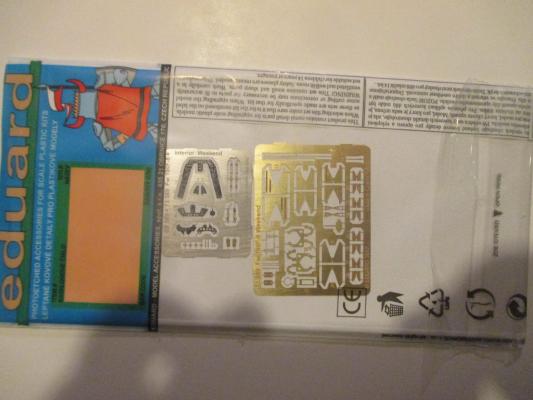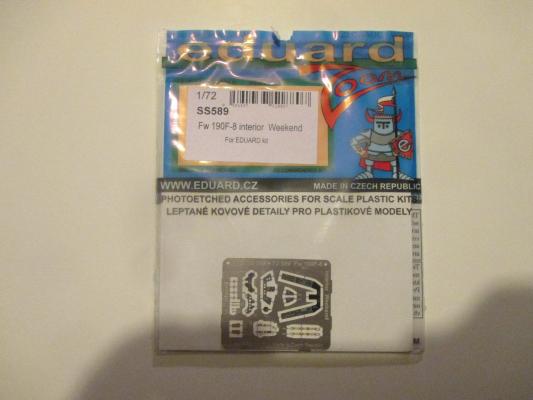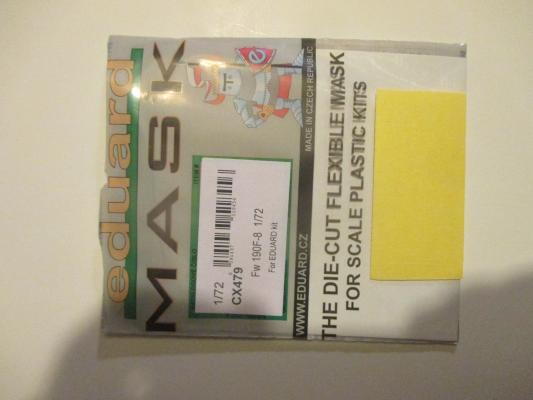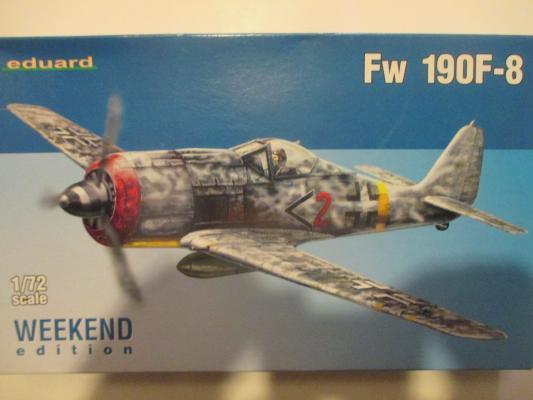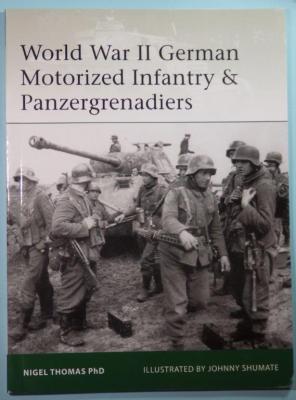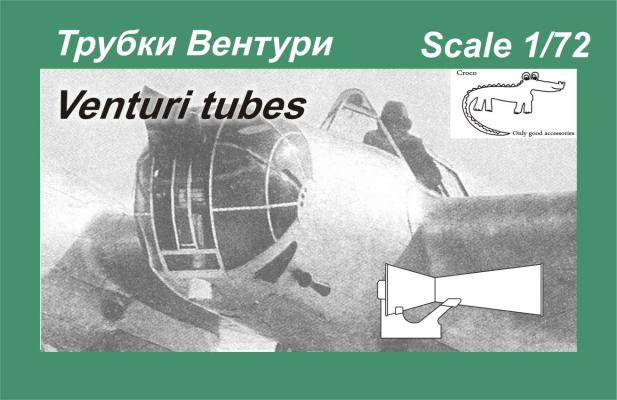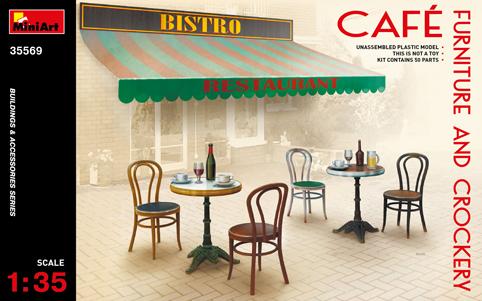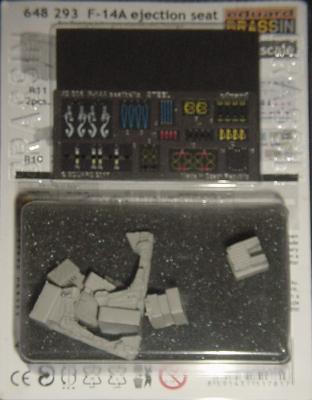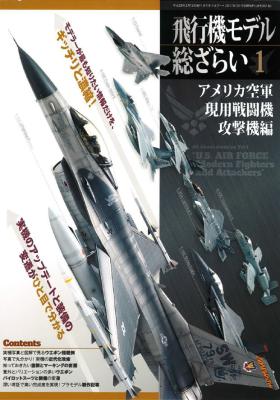This product includes two photo etch sheets for the Eduard FW0-190A/F kit. One is the previously described SS589 sheet, and the other is a different detail set, #73-589, which provides some exterior details, such as bomb fins, as well as some wheel well details and a part for the landing gear. If you get this set, you don’t need #SS589, as it is included here. This one is recommended if you want to add interior detail to your model.
What's New
This product is a small photo-etched sheet of metal that provides interior details for the cockpit of the Eduard FW-190A/F kit. It provides details for the instrument panel, seat belts and shoulder harnesses, and at least one interior wheel control for the cockpit side. Instructions are clear, and the effect on the cockpit interior is traumatic. The only problem I had was with the large piece for the side panels along with the mounting face for the lower instrument panel. This is all done in one piece, and I had trouble lining it up, so I had to cut the side control portions off and glue them directly to the cockpit parts on the kit. This is a welcome addition to the kit, and is worth getting. It is a lot easier to use these than it is to paint the kit details under a microscope. Recommended.
This product is a set of paper adhesive masks for any of the Eduard FW-190A and FW-190F kits. It will also work for almost any current FW-190 kit. Although I haven’t tried it on any of the FW-190D kits on the market. It is made up of two sheets of yellow masking paper, with cutouts for the canopy, windshield, and wheels. Although the wheel masks are included, the instruction sheet only covers the canopy masks, which will do for either the flat or bulged unit. These can be removed undamaged from the sheet with a pair of pointed tweezers, and they are simple to use. They cover the edges of the canopy only, and the central window area is supposed to be filled in with liquid mask, although masking tape works just as well. They save a lot of work and are highly recommended for use on any FW-190 kit.
History
The Focke Wulf FW-190 is probably one of the best known of Luftwaffe World War II fighters, and while the FW-190A fighter version was the major production model, a large number of ground attack variants, known as FW-190F and FW-190G, was produced to replace the vulnerable Stukas as the war progressed. The essential difference was the deletion of the outboard wing cannon, and the fitting of various types of bomb and rocket racks. The central rack could carry a bomb or an auxiliary fuel tank, while the wing racks usually carried bombs or rockets, although some aircraft, mainly “G” models, carried wing mounted drop tanks. These versatile aircraft were issued to Schlachtgeshwadern, ground attack units, in large numbers, and in fact, a number of pilots in these units became aces, although their primary role was attacking ground targets.
At the start of World War II, Germany’s advancements in mobile warfare shocked the world with their speed, ferocity, and success on the battlefield as they swept across Europe. Although, not always successful at the start, Germany was the first army to combine tanks, artillery, air power, and mobile infantry into a dominating force on the battlefield. Over the course of the war, the Allied powers tried to figure out a way to replicate Germany’s successes, with varying results. As reserves and resources became more scarce, Germany’s capabilities became more and more degraded and they were never able to get the same results they experienced during the early part of the war.
Croco Models is a small model manufacturer from the Republic of Latvia. They’ve recently begun developing small kits of rare vehicles, and various model building accessories. One of their more recent products is a set of 1/72 scale Venturi tubes. The Venturi tube is used to measure a plane's airspeed, and although most planes now use a Pitot tube for measuring this, Venturi tubes were common on early planes, and are still common on smaller planes in use today.
Mini Art, a Ukrainian company, has an extensive line of buildings and diorama accessories.
Everything from village cottages, city houses, and workshops to middle-eastern ruins. They also market a rather complete line of accessories to go along with their structure kits. These include fencing, staircases, furniture and crockery.
Case in point is the new set of Café Furniture and Crockery. The set includes fifty pieces on five sprues. You get two bistro-style tables and four wooden chairs. You also get one sprue with some crockery. The crockery consists of three plates/saucers and three cups as well as three mugs/steins. On my example, these parts were molded in white. There is also a small sprue of two types of bottles molded in clear green and a small sprue of glasses/stemware, in three styles, molded in clear plastic.
The Eduard Brassin set for the F-14A Tomcat ejection seats (GRU-7A seats) is a very comprehensive set. The set includes 3 resin pieces for each seat, plus a fret of painted brass with 15 distinct items, usually 4 of each.
Model Art Issue 63 is typical of other Model Art magazines in that it is written entirely in Japanese, with occasional English words, usually in article titles or in captions. The All About Aviation is part of the Model Art Extra series. This issue leads off with either short articles on a finished build or an in depth step-by-step ‘how to’ on the build and painting. The finished model photographs are of high quality in brightness, color, and depth of focus. Advertising is limited to two pages, the inside covers. I counted 749 color photos, one black and white drawing, and 106 color drawings, many color profiles. You will find throughout this journal, color photographs of the real aircraft that are discussed.
The Bf-109F introduced huge engine access doors for servicing the engine. With these hinged doors the Bf-109 was easy to service. This feature is a visually appealing look. So Eduard’s kit is a natural for this treatment. But with the complex look and shape of the engine and piping would they be able to capture it.
Eduard’s set is designed its 109Fs. Packaged in a sturdy cardboard box with protective Styrofoam pieces, the kit includes 46 resin parts, a photoetch fret, and decals to detail your engine. The resin pieces are secured inside of three small ziplock baggies. This prevents them from moving around and if something should break off it is easily found. My example had no breakage. The resin is the typical Eduard resin in light grey with no bubbles or warpage that I could tell. You will have to supply the solder to plumb the engine. You will need .3mm, .4mm, .5mm, .6mm and 1.0mm.

